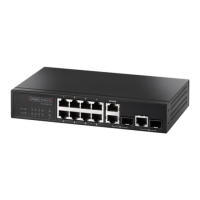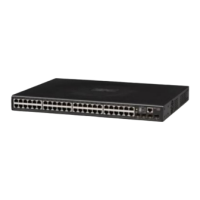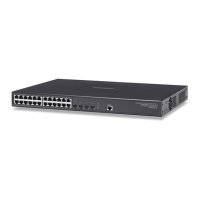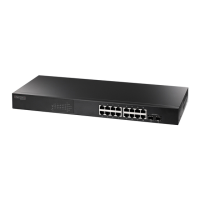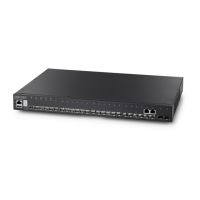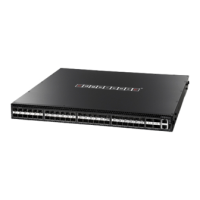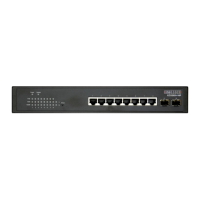C
HAPTER
18
| Multicast Filtering
Multicast VLAN Registration
– 481 –
■
Source – An uplink port that can send and receive multicast data
for the groups assigned to the MVR VLAN. Note that the source port
must be manually configured as a member of the MVR VLAN (see
"Adding Static Members to VLANs" on page 170).
■
Receiver – A subscriber port that can receive multicast data sent
through the MVR VLAN. Any port configured as an receiver port will
be dynamically added to the MVR VLAN when it forwards an IGMP
report or join message from an attached host
requesting any of the
designated multicast services supported by the MVR VLAN.
Just
remember that only IGMP version 2 or 3 hosts can issue multicast
join or leave messages. If MVR must be configured for an IGMP
version 1 host, the multicast groups must be statically assigned
(see "Assigning Static Multicast Groups to Interfaces" on page 482).
■
Non-MVR – An interface that does not participate in the MVR VLAN.
(This is the default type.)
◆ Oper. Status – Shows the link status.
◆ MVR Status – Shows the MVR status. MVR status for source ports is
“Active” if MVR is globally enabled on the switch. MVR status for
receiver ports is “Active” only if there are subscribers receiving
multicast traffic from one of the MVR groups, or a multicast group has
been statically assigned to an interface.
◆ Immediate Leave – Configures the switch to immediately remove an
interface from a multicast stream as soon as it receives a leave
message for that group. (This option only applies to an interface
configured as an MVR receiver.)
WEB INTERFACE
To configure interface settings for MVR:
1. Click Multicast, MVR.
2. Select Configure Interface from the Step list.
3. Set each port that will participate in the MVR protocol as a source port
or receiver port, and optionally enable Immediate Leave on any
receiver port to which only one subscriber is attached.
4. Click Apply.
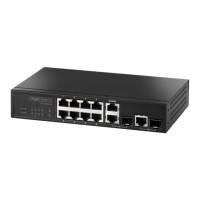
